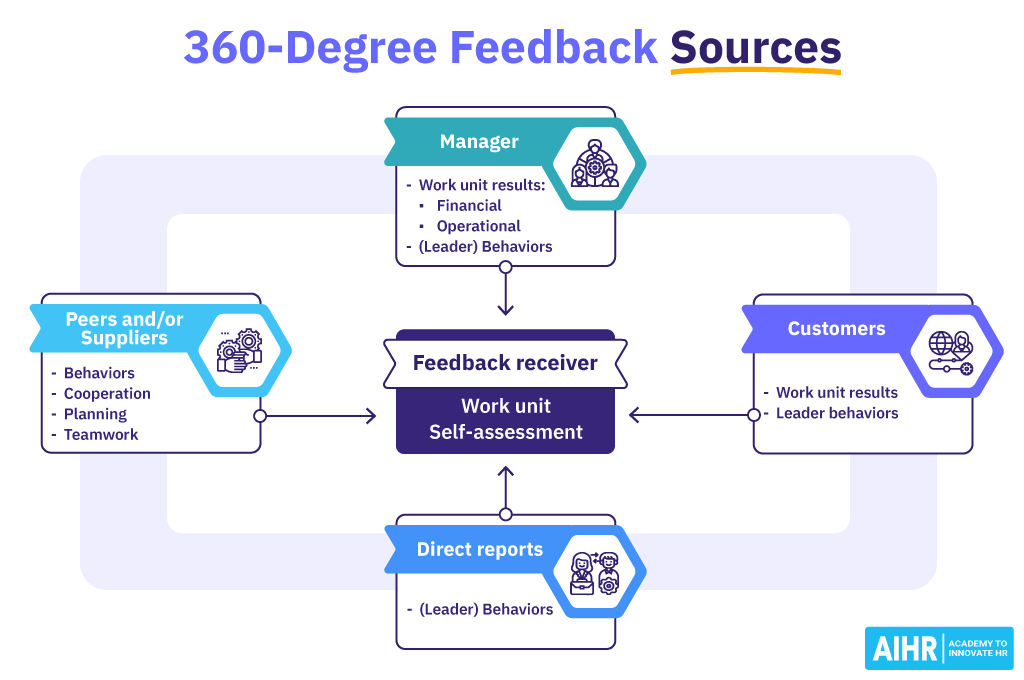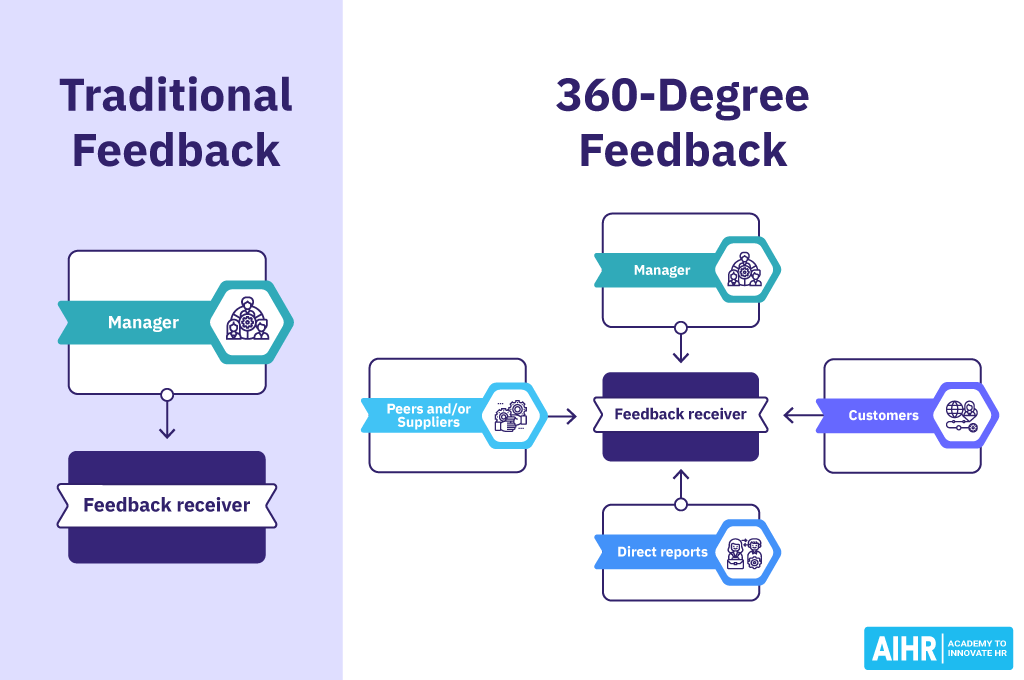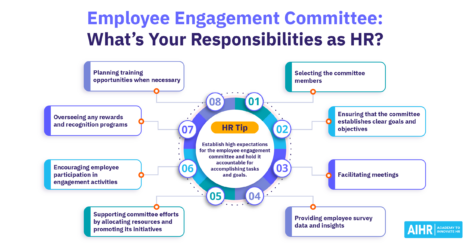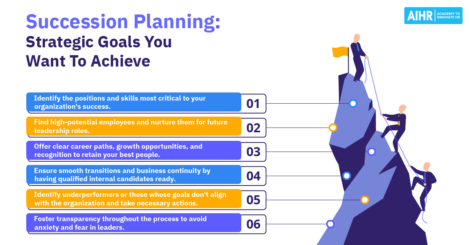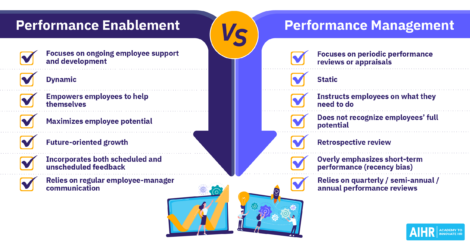360 Degree Feedback: A Comprehensive Guide

With 360-degree feedback, employees get valuable input from multiple directions about what they’re like to work with. Instead of being limited to the perception or bias of a direct supervisor, they receive a broader and more balanced viewpoint. Realizing that others may not view them how they want to be seen can inspire employees to devote more effort to their development.
In this article, we’re going to explore the ins and outs of 360-degree feedback.
Contents
What is 360-degree feedback?
What should be included in 360-degree feedback?
Why is 360-degree feedback important?
Advantages and disadvantages of 360-degree feedback
Implementing a 360-degree feedback system: Best practices
360-degree feedback questionnaire
360-degree feedback software
FAQ
What is 360-degree feedback?
360-degree feedback, also called multisource or multi-rater feedback or 360 review, is an employee evaluation method that garners input from various sources about performance and areas of improvement.
It comprises ratings and feedback from internal stakeholders who have a close working relationship with the employee, namely peers, direct reports, and supervisors. Another source of feedback is self-assessment.
External stakeholder feedback can also be included, such as customers, vendors, and suppliers. This widened scope of raters is referred to as 720-degree feedback.
While the 360-degree feedback system has been used mostly for leaders and managers, it’s becoming increasingly popular for all employee groups as companies move away from traditional top-down, single-source feedback and performance management. It’s emerging as a valuable employee development tool because it offers a holistic perspective on strengths and improvement areas.
What should be included in 360-degree feedback?
Obtaining sufficient feedback requires asking the right questions. You want to find out which competencies, traits, and behaviors employees display while doing their jobs.
Organizations need to tailor their 360-degree feedback questionnaire to their assessment needs and values. Questionnaires typically cover the following categories:
- Communication skills
- Interpersonal/soft skills
- Collaboration and teamwork
- Leadership and management capabilities
- Innovation and creative abilities
- Business goals/desired culture being lived out
Jonathan Westover, OD/HR/Leadership consultant from Human Capital Innovations, emphasizes: “It is important to ensure that feedback is focused on behaviors and actions, rather than personal characteristics or traits. This can help ensure that feedback is objective and focused on areas that the employee can actually improve upon.”
We’ll discuss the 360-degree questions in more detail later in the article.
Why is 360-degree feedback important?
Rather than focusing just on goals and achievements, 360 reviews also show employees how they work from different perspectives. Well-informed feedback from multiple sources uniquely contributes to employee growth and development.
Seeing how their behaviors and work practices affect different groups of people helps them understand their strengths and what they need to work on. This insight reveals what it will take for the employees to be more successful in their current jobs and achieve their long-term career goals.
“This approach is also more democratic and inclusive, which can promote greater employee engagement and a sense of ownership,” adds Tara Furiani, “Not the HR Lady” keynote speaker and consultant.
A case study example from the leadership development company Talent for Growth shows the value of 360-degree feedback.
Bucks New University in the United Kingdom wanted to develop strong leaders who could guide it through the challenges facing higher education. They started a 360-degree feedback program to build a culture of feedback, raise the quality of faculty working relationships, and emphasize leadership development. In a survey a year later, 100% of the managers stated they had direct reports who had made positive changes with tangible benefits.
Advantages and disadvantages of 360-degree feedback
While 360-degree feedback can be a great tool for employee and leadership development, it also has its limitations. Let’s dive deeper into the benefits and drawbacks of this type of feedback.
Benefits of 360-degree feedback
A well-implemented 360 review system can have a positive impact on the employees, and ultimately, the organization. These benefits include:
- Building a competitive advantage – Because of its focus on leadership development, improved behavior from leaders and managers will lead to a better competitive position for the organization (London and Beatty, 1993).
- Improved customer service and loyalty – Feedback from internal or external customers points to specific areas where employees can make changes that enhance the customer experience. The more positive interactions customers have, the more likely they are to maintain the relationship. Smith and Walker (2001) found that positive 360-degree feedback ratings of bank managers were correlated with customer loyalty.
- Enhanced teamwork and productivity – Accountability for how individuals work with each other encourages stronger communication and collaboration. This leads to better performance and higher productivity. Conway, Lombardo, and Sanders (2001) found that direct reports and team member ratings explained more variation in measures like productivity and profit than other sources.
- Better performance assessment for large teams or remote workers – When people work independently without daily interactions with their manager, observations from others help fill in the gaps.
- Expanded internal talent pipeline – As employees develop their skills and overcome challenges, the organization has a larger pool of potential leaders to draw from.
- Lower employee turnover and higher engagement – Church (2000) found that managers who received positive 360-degree feedback had lower turnover and higher service quality in their teams. In line with this, Atwater, Brett, and Ryan (2004) discovered that positive subordinate ratings lead to an increase in satisfaction and engagement and a decrease in turnover in the team.
Disadvantages of 360-degree feedback
Expectations for multi-rater feedback must be realistic. It is only one part of a performance management system and doesn’t stand on its own. There is no guarantee that a 360-degree feedback program will be successful, especially if designed or executed poorly. Such a program can even result in lower shareholder and market value (Watson’s Wyatt 2001 HCI report).
That’s why it’s important to be aware of the potential challenges that come with it, such as the following:
- Time and cost: Four to eight raters may be involved in rating one employee, and they need proper training to deliver feedback in the right way. This is very costly in terms of the time both training and rating require.
- Suitability: Smaller companies may not have enough sources and the objectivity to provide quality 360-degree feedback.
- Difficulty: Giving feedback is difficult and can cause conflict and uncertainty among team members and lead to inaccurate ratings and unconstructive or insufficient input. This is especially the case when there is no prior training for raters.
- Lack of alignment with strategy: 360-degree feedback often focuses on competencies or skills that may not be in line with the organizational strategy. If it is just tacked on without incorporating the direction and values of the organization, it may result in a focus on behaviors that do not reinforce business priorities.
- Lack of follow-up: If senior leaders don’t value and support the 360-degree feedback process, it can just be a one-off with no consequence for poor performance. On top of that, a lack of follow-up decreases behavioral change.
Implementing a 360-degree feedback system: Best practices
It takes careful planning and execution of a 360-degree feedback system to produce an effective outcome. Here are ten best practices to keep in mind, starting with six general considerations followed by four technical principles:
- Engage all relevant stakeholders – Getting buy-in from relevant stakeholders ensures support from senior decision-makers and participation in the 360 process and action plans.
- Define what success looks like – Define how you will measure the success of the 360 program and communicate this to all relevant stakeholders. Success criteria could be the percentage of completed surveys within 14 days, a completed improvement plan for each employee based on the 360 input, and, in the end, behavioral change or improvement.
- Create urgency and reward – Because a 360 survey may not be seen as something requiring immediate attention, it is often delayed into oblivion. An excellent way to solve this is to set and communicate a clear deadline for submission. This works well when it is mandatory to complete the survey. Alternatively, rewarding people for completing the survey could also be very effective. This incentive could be any small gift that motivates people to participate.
- Plan follow-ups – A 360-degree evaluation should not be a stand-alone event. Stimulating individual employees to take action and official follow-up activities on the 360 feedback help in triggering and supporting the behavioral change needed to make it a success. “While the 360 feedback can be useful on its own, it needs clear thinking when it comes to creating actions post-feedback, i.e., How are you going to improve X? Where can you develop Y?” notes Shaun Wilde, CEO and HR Director at the learning platform Think Learning.
- Consider development vs. evaluation – If the goal of the 360-degree feedback is personal development, ratees should be able to select their raters. In this case, building a culture of feedback in the organization will be important. If the goal is performance evaluation, ratees should be chosen based on how close they work together with the rater. In this case, the 360 should be embedded into the performance management system.
It is important to communicate to all parties involved the purpose and use of the feedback and to provide clear guidelines on how the feedback will be collected, analyzed, and used.
Veena KV, Head of People Ops at FirstPriciples
- Integrate goals and competencies – The ultimate goal of the 360 is to improve business performance. Therefore, it is critical to focus the evaluation on the competencies that are important for the individual’s job. Being highly proficient in a critical competency will result in superior performance in the function. That, in turn, leads to better organizational outcomes. Knowing the competencies needed to excel in one’s job and focusing on evaluating these is critical for successful 360 feedback. If your organization has a competency framework, you can use it for this.
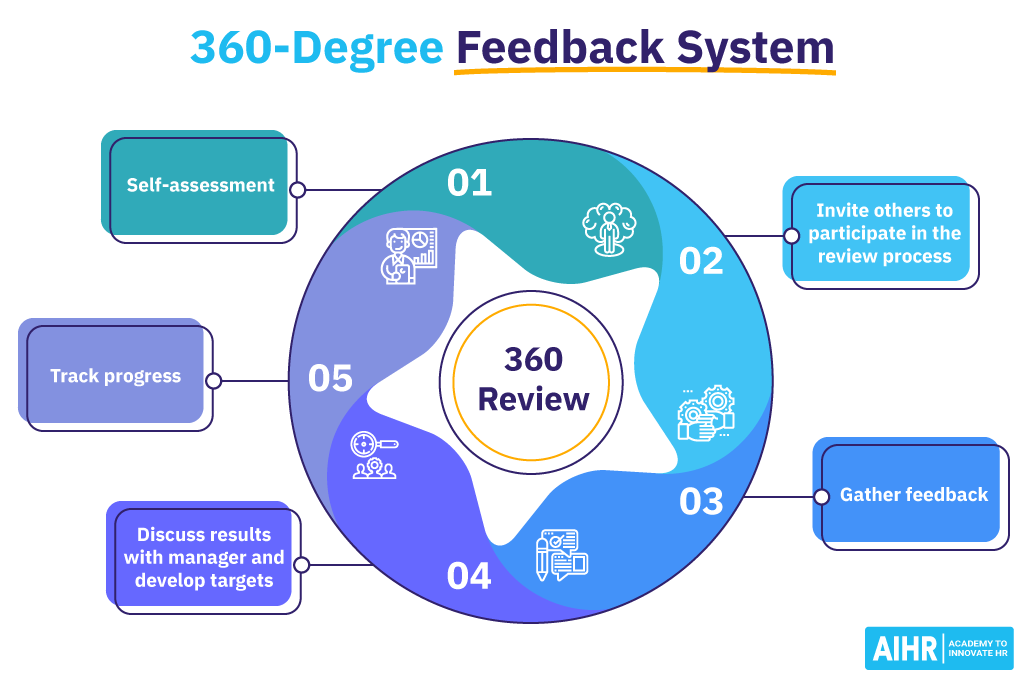
Bracken & Rose (2011) list the four success criteria to make a 360 process work as follows:
- Relevant content of the 360 surveys – The questions and competencies included and evaluated in the 360-degree survey should be in line with the values and competencies that are unique to the organization. According to the authors, “Although it is possible to find good approximations with standardized tools, the best fit comes from a custom survey.”
- Credible data – The data coming from the survey are potentially used by multiple users. These include feedback recipients, feedback providers, managers, coaches, and HR. Data should have both real and perceived credibility, meaning it is accurate and valid and also seen as such. Best practices are (i) to have sufficient raters, (ii) raters who are sufficiently familiar with the subject, (iii) having raters selected by the subject (with approval from the manager), (iv) a professional instrument that measures behaviors, (v) an instrument that does not trick the rater through randomization or reversed wording, (vi) a standardized and clear rating scale, and (vii) having rater training.
- Accountability – The subject should be accountable for the feedback. Create follow-ups with either the manager or a coach. Ways to override an individual’s resistance to change include sharing feedback and personal goals with others and connecting bonuses to desired behavioral change. The direct manager can play an essential role in this accountability process.
- Census participation – For 360-degree feedback to work, everyone has to participate. The drawback of a 360 is that it is labor-intensive. Every employee requires feedback from several others, resulting in everyone in the company giving feedback to multiple people. For this reason, management has to set clear expectations, be accountable for the successful completion of the feedback, and help to create a climate of consistency and fairness for all stakeholders.
When collecting 360-degree feedback, it is important to keep in mind that you are asking the right team members to provide feedback.
Individuals that work specifically with an employee should be asked, as they are able to provide honest and first-hand feedback. If a peer or colleague is asked to provide feedback, but they do not really know the employee or work with them, the feedback provided will not be meaningful or accurate.
Bryan Adelson, Consultant at Red Clover HR
360-degree feedback questionnaire
You must pose the right questions in order to extract high-quality feedback. Here are some instructions for constructing a 360-degree feedback questionnaire:
- Select the competencies per function that add the most to superior performance: Each role has critical competencies that are needed for outstanding performance. Focus on competencies that contribute the most to the organization’s strategy and goals. Note: Don’t choose more than four competencies, or it will be overwhelming for employees.
- Define 3-4 behaviors per competency: Define the behaviors, or dimensions, for each competency. These are the questions that the raters will give feedback on. (See the examples below.)
- End with open feedback: At the conclusion of the survey, include open-ended questions about the competencies that the ratee can develop.
360-degree feedback example questions
Qualtrics gives the following 360-degree feedback example questions:
Self-awareness
- Controls emotions, even in high-pressure situations.
- Demonstrates an awareness of how their actions and decisions affect others.
- Treats mistakes and setbacks as learning opportunities.
- Actively seeks feedback from others on their performance.
What suggestions do you have to help them improve their self-awareness?
Drive for results
- Sets challenging goals for themself.
- Helps others achieve their objectives.
- Prioritizes work based on the needs of the organization and its customers.
- Achieves objectives even when faced with obstacles and challenges.
What suggestions do you have to help them improve their drive for results?
Leadership skills/potential
- Encourages others to pursue growth and learning.
- Motivates others to set and achieve goals.
- Is resourceful in solving problems.
- Deals with conflict appropriately.
What suggestions do you have to help them improve their leadership abilities?
Delivering effective feedback is a learned skill, not something we’re born with. It’s also awkward if it’s not already an established part of the culture.
For the feedback to be successful, there needs to be a system for collecting and distributing it. There also needs to be guidance, success criteria, and examples of what good feedback sounds like. This framework can help people get more comfortable giving the feedback.
Elisa Di Mauro, Senior Manager of Talent Development at Rent the Runway
360-degree feedback software
The 360 review process can be inconsistent and difficult to manage without using technology. There are multiple tools that provide 360-degree feedback functionalities. The two we’re mentioning here are not necessarily recommendations. Instead, we’re providing them as a sampling of what is available.
Trakstar software includes 360-degree reviews that you can incorporate into a pre-existing performance system. It allows feedback collection from multiple internal and external parties via email. Users can formulate individual goals, track their progress, and create customized questionnaires.
Well-known survey system provider Qualtrics offers a 360 development function. Qualtrics’ intuitive interface makes it easy to add questions targeted to specific groups and generate reports on the results of the 360, as shown below. It can also link certain actions to third-party learning resources.
To conclude
With commitment from leadership and careful planning, a 360-degree feedback system has plenty to offer. It can help organizations create effective employee development plans by accurately depicting their performance and identifying issues that need further attention.
You can also avoid mistakes that often undermine a successful 360-degree feedback program with thorough planning, clear explanation, and conscientious execution.
FAQ
360-degree feedback is a method of employee performance assessment that gathers input and ratings from multiple stakeholders, including peers, managers, and direct reports.
360-degree feedback can contribute to better work performance, leading to higher customer satisfaction and gaining a competitive advantage.
Drawbacks of 360-degree feedback include the time and resources it takes and that it can be challenging to execute properly.
360-degree feedback is an investment in employee development. Instead of being limited to supervisor evaluation, employees can see a bigger picture of how their behaviors affect others.
Reinforcing what they do well and finding areas for growth helps employees develop into better employees and future leaders.
If designed and implemented correctly, a 360-degree feedback system can have a positive impact on employee performance by providing constructive input from a well-rounded group of sources that improves effectiveness and strengthens accountability and teamwork.
Weekly update
Stay up-to-date with the latest news, trends, and resources in HR
Learn more
Related articles
Are you ready for the future of HR?
Learn modern and relevant HR skills, online





